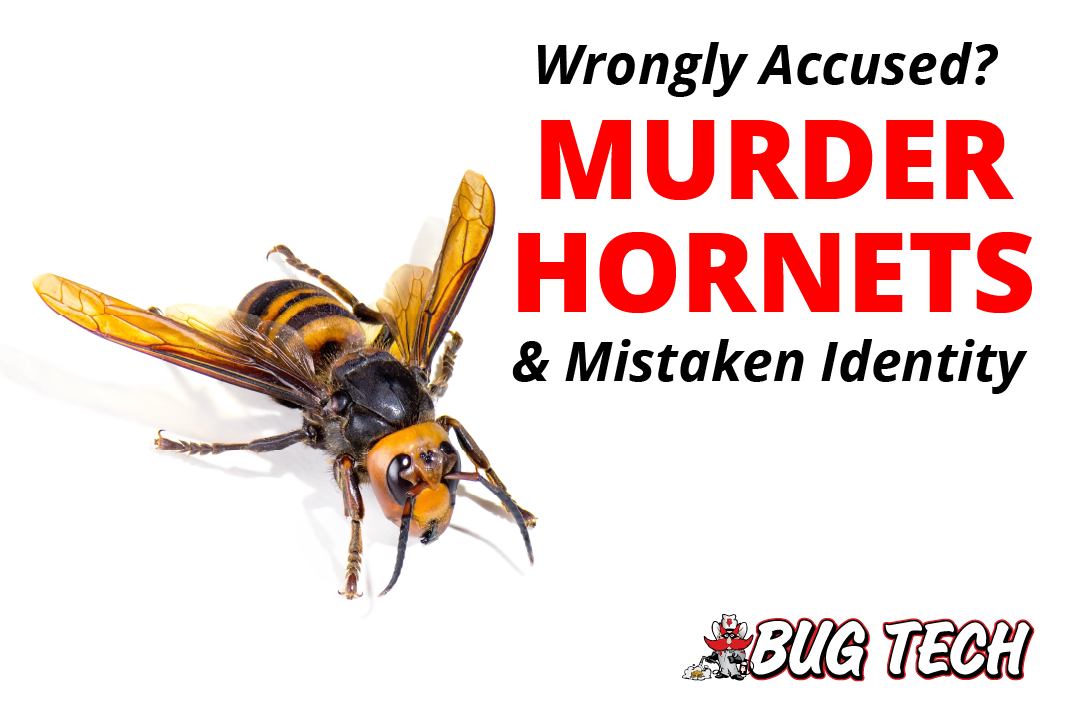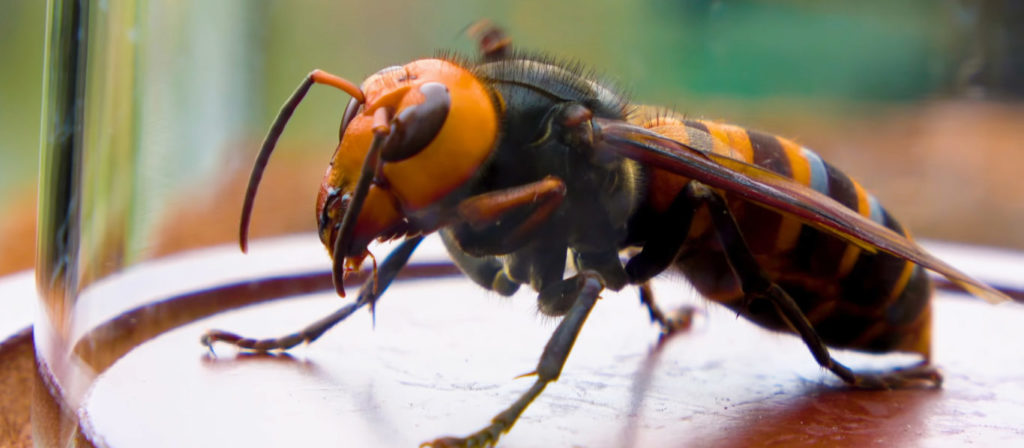WRONGLY ACCUSED? MURDER HORNETS AND MISTAKEN IDENTITY

Without a doubt, 2020 has been a rough year, to say the least. In addition to coronavirus, shelter in place, furloughs, economic recession, riots, and an upcoming presential election, we hear that Asian Giant Hornets are invading our country. While we will leave most of the current state of affairs to the experts, Bug Tech can clear up the mistaken identity of murder hornets.
The New York Times report about Asian Giant Hornets, also known as murder hornets, seemed the icing on this year’s inedible cake but rest assured, they are not in Texas and are not the killers, you may think.
WRONGFULLY ACCUSED
Asian giant hornets first appeared in the US in 2019 and earned notoriety for their “murder hornet” nickname. Believe it or not, murder hornets don’t murder anyone, but they can destroy honey bee colonies. While protecting bees are essential for most fruit and vegetable crops, we can let go of Hollywood-inspired swarm fears. Asian giant hornets are fiercely protective of their nests and deploy painful and sometimes fatal stings, mass murder is unlikely.
NATION-WIDE SEARCH
The Asian giant hornet made its way from Japan to the United States as a stowaway in shipping containers. Although they are strong flyers, so far, murder hornets have not been found in the U.S. outside of Washington state. Texas experts reported a look like insects submitted for identification as a possible murder hornet. Texas AgriLife Extension experts confirm that what we are seeing in Texas is not the Asian giant hornet but Texas native cicada killers, or ground hornets.
MISTAKEN IDENTITY
Cicada killer wasps are mostly harmless to humans – their name comes from their hunting of cicadas, not us. While cicada killers may have a similar look to Asian giant hornets, size is the biggest differentiator.
The Asian giant hornet is the world’s largest known hornet, say Texas A&M Agrilife experts. It measures 1.5 to two inches in length. Its head is as wide as or wider than its shoulders and is a bright orange or yellow. The thorax, or shoulder portion where the wings and legs are connected, is a dark brown, as is the antenna. It has a pinched waist and smooth-looking brown and orange stripes that cover the abdomen.

Cicada killers, of which there are three different species, are also large, measuring one to 1.5 inches in length. However, the wasps will all typically have a head that is narrower than the thorax. The head and the thorax are typically the same color, a darker orange or brown color. Like the Asian giant hornet, the cicada killer also has a pinched waist, but the stripes on the abdomen are jagged and sometimes look like mountains.
While being aware of nearby buzzing is smart, remember that just because it’s big doesn’t make it a killer. Murder hornets are most dangerous to bees, and cicada killers rarely sting and are not aggressive.
Much like any other insect, pest control relies on understanding their lifecycle. If you have a pest control or pest identification question, Bug Tech can help. Give us a call at 806-771-5142 or click here.
Source: https://agrilifeextension.tamu.edu/library/insects/murder-hornet/
